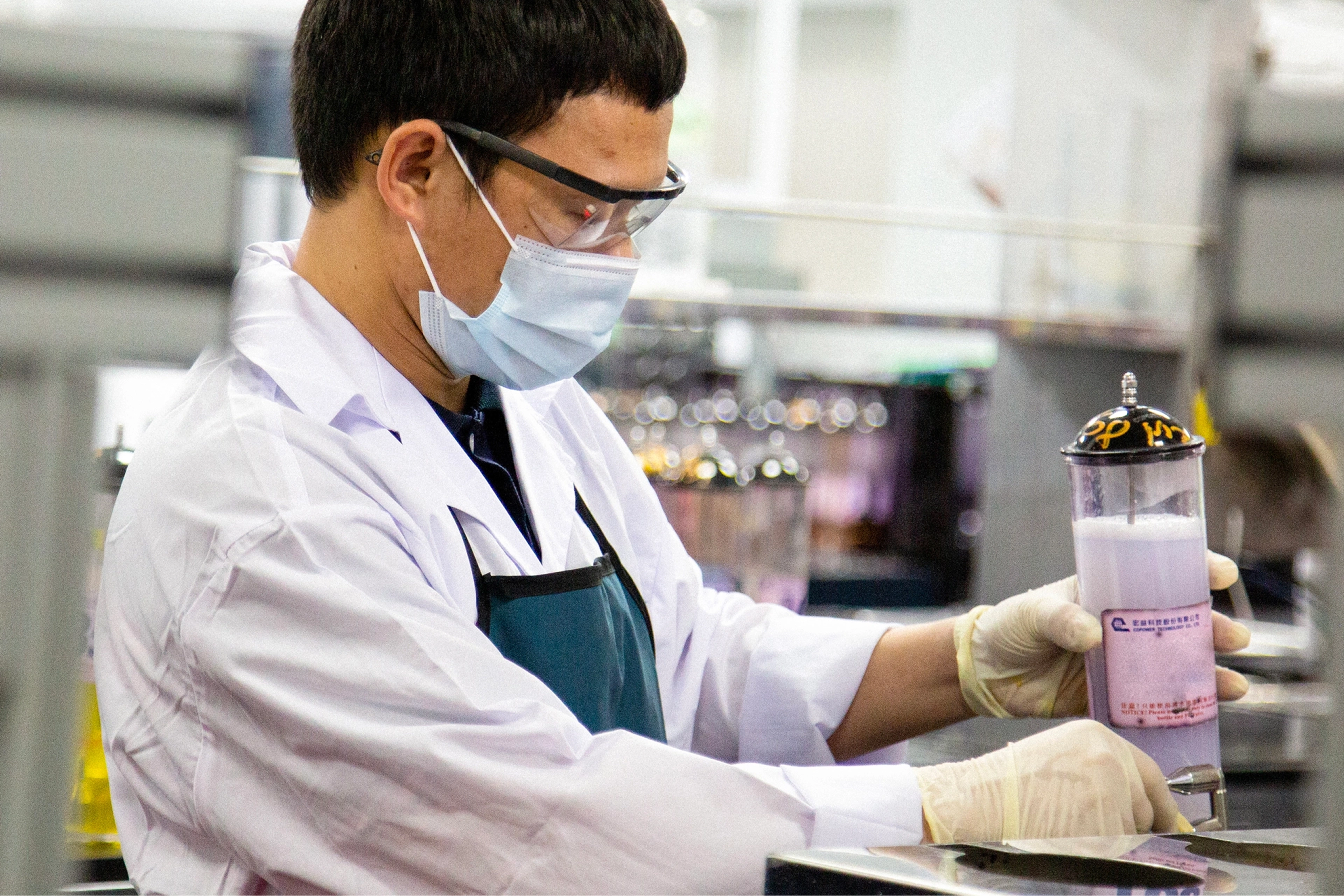Eliminating Hazardous Chemicals
Chemistry is at the core of how we deliver performance and sustainability to all athletes*. From raw-material processing to product creation, we are innovating cleaner chemistry alternatives to improve performance, the recyclability of our materials and the role our products can play in a circular economy.
Our approach is responsible and proactive. We use the latest scientific information to make qualified decisions on chemical hazards and risks. We identify and design out chemicals of concern and innovate solutions that account for key environmental and health impacts, even when chemicals of concern are not banned or restricted. We leverage our influence to drive change across industries.

Our cleaner chemistry approach is guided by our Supplier Code of Conduct and Code Leadership Standards (CLS), which require chemicals to be properly managed in each step of manufacturing. We continue to require strict compliance with our Restricted Substances List (RSL) and the ZDHC Manufacturing Restricted Substances List (MRSL)—programs that drive monitoring and controlling of over 400 substances.
In 2020, NIKE identified 10 chemistries that the latest science indicated a need for cleaner chemistry alternatives and set about creating those alternatives. As of FY24, we have converted six of our priority chemistries—PFAS, DMF, ZP, NPEOs, neoprene and formaldehyde—to cleaner chemistry alternatives.
- Per- and Polyfluorinated Chemicals (PFAS): a broad class of widely used fluorine-containing substances
- Dimethylformamide (DMFa): an industrial solvent widely used in the manufacturing of synthetic leather, polyurethane (PU)-coated leather and PU skins
- Dicumyl Peroxide (DCP): a crosslinking agent for polymers that can be problematic in some environments when it breaks down
- Zinc Pyrithione (ZP): an antimicrobial treatment that has been widely used as an anti-odor finish
- Nonylphenol Ethoxylates (NPEOs): a detergent once used in our industry and still used in some adjacent industries
- Formamide: a by-product from the manufacturing of some foam materials
- Organic Solvents (VOCs): a broad class of chemicals that can be used as additives in applications such as adhesives, paint thinners, primers and surface cleaners
- Bisphenols: chemicals that can be used as a building block for some plastics or adhesives and as a thermal printing additive
- Formaldehyde: a solvent that has many cross-industry uses, including in adhesives, polymers and preservatives and as a stabilizer in some inks and paints
- Neoprene: used in applications needing rubber and foam properties, but it can contain substances that are problematic to some users
We continue to drive cleaner chemistry progress at scale in a global supply chain, supporting industry groups focused on chemical management practices and cleaner chemistry approaches within—and adjacent to—our industry.
Visit Chemistry at NIKE to learn more.